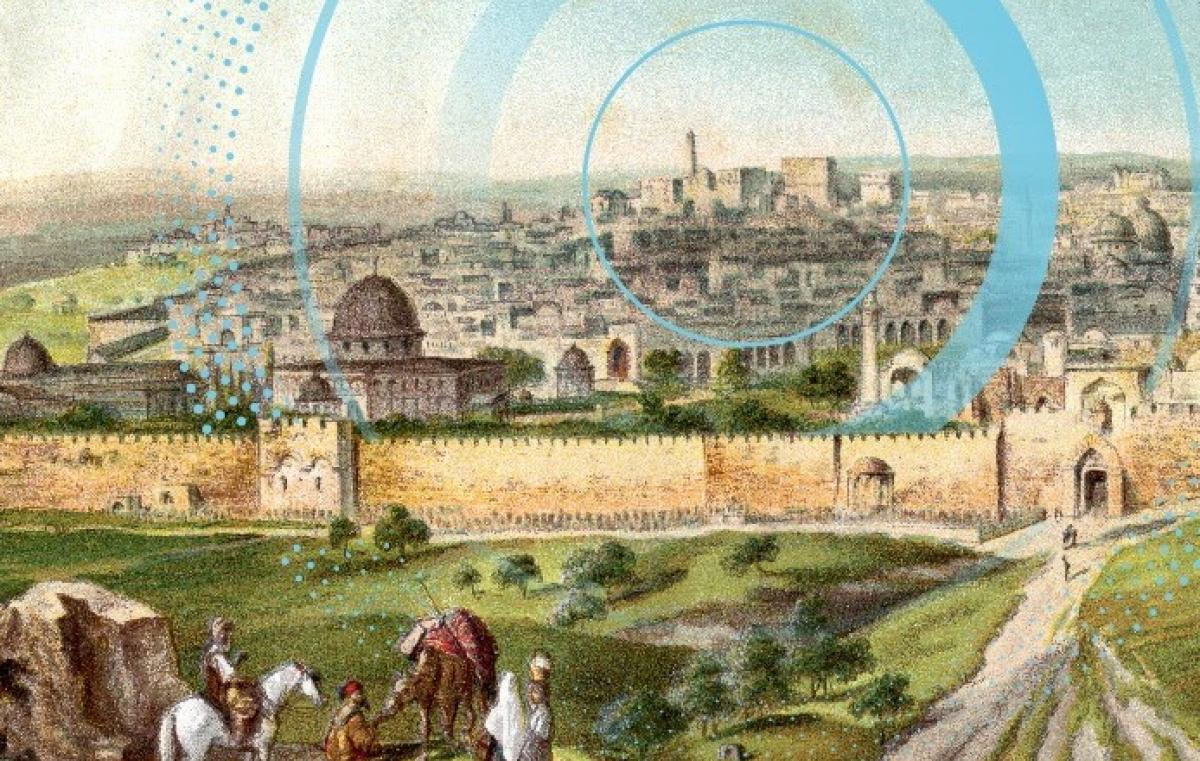The Ninth of Av & Isaiah's Vision
On the Sabbath preceding Tisha B’Av – the day of Jewish mourning for the destruction of both Temples in Jerusalem – a special “haftarah” (reading from the Prophets) is recited in the synagogue

Prof. Yigal Levin, Chair of BIU’s Multidisciplinary Department of Jewish Studies and member of the Koschitzky Department of Jewish History and Contemporary Jewry, shares some historical insights:
The haftarah reading from the first chapter of the book of Isaiah, begins with the words “The vision of Isaiah son of Amoz, which he saw concerning Judah and Jerusalem.” The word “vision” – “ḥazon” in Hebrew, gives this Shabbat its special name, “Shabbat Ḥazon.” The chapter then goes on to describe a vision of desolation:
“Children I reared and brought them up, but they have rebelled against me. The ox knows its owner, and the donkey its master's crib; but Israel does not know, my people do not understand. Ah, sinful nation, people laden with iniquity… who have forsaken the Lord… Your country lies desolate, your cities are burned with fire; in your very presence aliens devour your land; it is desolate, as overthrown by foreigners. And daughter Zion is left like a booth in a vineyard, like a shelter in a field, like a besieged city. If the Lord of hosts had not left us a few survivors, we would have been like Sodom, and become like Gomorrah.” (Isa 1:2-9)
While, tradition connects this chapter with the destruction of Jerusalem by the armies of Babylon which we mourn on the Ninth of Av, perceptive readers might notice the following points:
1. The final lines in the above excerpt state that “Zion is left like a booth in a vineyard… like a besieged city.” In other words, something is left over! “If the Lord of hosts had not left us a few survivors, we would have been like Sodom, and become like Gomorrah” – but we were not! So despite the widespread destruction, Jerusalem was still standing, “like a besieged city.” So why do we read this, while mourning Jerusalem’s destruction?
2. Additionally, while the prophet Jeremiah (the first two chapters of whose book are read on the preceding two weeks) lived through the destruction of Jerusalem and wrote from personal experience, Isaiah lived over a century earlier, at the end of the eighth century BCE, when no one considered Babylon to be an enemy of Judah. In fact, Isaiah 39 even tells of envoys of Merodach-baladan, king of Babylon, who came to visit Hezekiah king of Judah! So what is the connection between Isaiah and the Ninth of Av?
The prophet Isaiah lived during the reigns of Ahaz and Hezekiah, kings of Judah. At that time, the great threat was not Babylon but Assyria, which even conquered Babylon. Through the ninth and eighth centuries BCE Assyria expanded westward, taking over all of Syria and the Land of Israel. In 722 the Assyrians conquered Samaria, bringing the northern kingdom of Israel to its end and exiling most of its inhabitants (later known as “the ten lost tribes of Israel”). In 701 BCE, Sennacherib king of Assyria arrived in order to defeat a rebellion, in which Hezekiah was a leader. From references in the Bible, in Assyrian inscriptions and from archaeological evidence at various sites, we know that Sennacherib caused huge destruction throughout the land. Cities such as Lachish, Beth-Shemesh and Beer-Sheva were destroyed, and hundreds of thousands were killed or exiled. But Jerusalem survived unscathed. According to Sennacherib’s own writings, this happened because Hezekiah paid a huge amount of tribute. The Bible, while not denying that Hezekiah paid up, attributes this miraculous salvation to a mysterious plague that God wrought upon the enemy. So while indeed “Your country lies desolate, your cities are burned with fire; in your very presence aliens devour your land; it is desolate, as overthrown by foreigners”, “daughter Zion is left like a booth in a vineyard, like a shelter in a field, like a besieged city.” God did leave some survivors, there is hope for the future, we are not quite like Sodom and Gomorrah yet!
And perhaps that is the message for the Ninth of Av: despite the destruction, in the future “Zion shall be redeemed by justice, her repentant ones, by righteousness!”